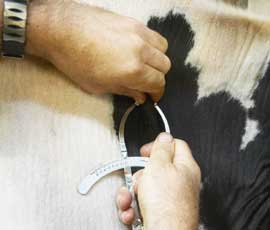Cattle TB figures show slight drop over the year

The number of cattle herds which have succumbed to bovine tuberculosis in 2013 has shown a slight fall compared to 2012, the latest government figures show.
Between January and September 2013 the number of herd breakdowns was 3,556, according to the statistics released by the Animal Health and Veterinary Laboratories Agency on 11 December.
That marks a 5.5% reduction on the 3,777 breakdowns recorded over the same period in 2012.
Of the 52,000 tests carried out on officially TB-free herds, the overall rate of new incidents uncovered was 4.4% – a marginal decline on the 4.6% rate in 2012.
The statistics also show that the number of cattle slaughtered to control the disease has dropped by 9.5%.
In 2013 the number of reactors and direct contacts compulsorily slaughtered was 24,618 compared to 27,208 during January to September 2012.
NFU vice president, Adam Quinney, said he was pleased the latest statistics showed a drop in the number of new herd incidents.
But he said: “We must not forget that there were still more than 3,500 new herds that came down with TB in the first nine months of 2013 and it is vital that we use every option available to us to control and eradicate this disease.
“More than 38,000 cattle were compulsorily slaughtered in 2012 in Great Britain because of TB and more than 24,500 have been slaughtered so far this year because of this terrible disease.”
He added: “Bovine TB is one of the biggest issues facing our beef and dairy farmers and remains an ever-present threat to farmers in areas where it is endemic. Farmers are playing their part in helping to stop its spread but these figures continue to demonstrate the need to tackle TB on all fronts, including the reservoir of disease in wildlife.”
More on bovine TB and the badger cull
